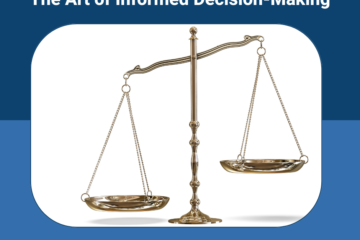
Busy Time Bonanza
When we’re in the middle of a busy day, the ticking of a clock can sound more like a countdown than a timer. In this busy time of hustle and juggling, it can be hard to find balance in our ‘Busy Time Bonanza’. Today, we’ll get into the details of time management, looking at how we can make the most of every second and turn our busy times into a store of productivity and happiness.
The Busy Time Paradox
The “Busy Time Paradox” is an interesting idea that shows a humorous truth about how we think about and spend our time. It means that the more things we have to do or how busy we are, the more we feel like we’re running out of time.
This problem usually happens when people don’t use their time well. We tend to pack our schedules full of events instead of planning our time based on what tasks are most important. This kind of method makes people feel like they are always on the clock or too busy. We end up feeling like we’re “running against time,” stuck in a never-ending circle of work that makes it seem like time is going by faster.
But what this riddle is really about is how we think about time. Time is not an enemy that needs to be beaten; it is a neutral resource that goes on at its own pace no matter what we do. We feel like we don’t have enough time when we’re busy not because time is going faster but because we don’t use it well.
To solve the “Busy Time Paradox,” we need to change the way we think about and handle our time. We shouldn’t try to beat time or cram more things into our plans. Instead, we should focus on making the best use of our time. This means knowing how important each moment is, setting clear priorities, delegating or getting rid of jobs that aren’t important, and making sure there’s a good balance between work and rest. By doing this, we can make the most of our busy times and turn them into times of useful, satisfying work instead of stressful rushing.
The Value of Every Ticking Second
The idea behind “The Value of Every Ticking Second” is that every second of our lives is important. It shows how how we think about time can have a big effect on how we feel about it, especially when we are busy.
This theory says that time, which is usually thought of as a series of fleeting moments, is more than just a way to measure length. Every second is a chance to learn, grow, make a difference, or have fun. It tells us to be aware of how we spend each moment and to remember that every second we spend doing something, whether it’s work, play, or rest, can have a big effect on our lives.
Time is merciless and can’t be turned back. Once a moment is gone, it’s gone for good. So, every second is worthless because it can’t be bought or sold. How we use this priceless resource affects the quality of our events and, in the end, the way our lives go. This knowledge is the foundation for turning “Busy Time into Best Time.”
To understand “The Value of Every Ticking Second,” we have to admit that every second is important. Whether we’re working on a big project, hanging out with friends and family, or enjoying a hobby, every second helps shape our identities, skills, relationships, and sense of satisfaction.
When we think of each second as a building block for our general growth and happiness, we are more likely to choose how we spend our time with care. We don’t have to see our busy times as chaotic or stressful. Instead, we can see them as chances to make progress and add value. This change in attitude can make a big difference in how well we use our time, how much we get done, and how happy we are, turning even the busiest times into times of joy and success.
Three Pillars of Time Management in Busy Times
Prioritize mindfully, balance work and rest, and use technology. These three pillars are the most important methods for managing time well, especially when things are busy. Here’s a look at each of these factors in more detail:
Prioritize Mindfully
When you have a lot of jobs and responsibilities every day, everything might seem important. This can lead to a never-ending loop of hard work that is often not very productive. “Prioritize Mindfully” is the key to getting out of this loop. This means figuring out which jobs are important and need immediate attention and which ones can be put off, given to someone else, or even ignored.
Eisenhower’s Decision Matrix is a helpful tool for putting things in the right order. This matrix helps divide jobs into four groups based on how important and how quickly they need to be done:
Quadrant I: Important and Urgent
Quadrant II: Important but Not Urgent
Quadrant III: Not Important but Urgent
Quadrant IV: Not Important and Not Urgent
Focusing on Quadrant II tasks, which are important but not urgent, can keep them from becoming urgent, lowering stress and making you more productive. When time is spent less on Quadrants III and IV, more time is available for important tasks.
Balance Productivity and Rest
It’s a myth that being busy all the time means you’re getting things done. In fact, working nonstop can lead to physical and mental burnout or exhaustion, which makes it hard to get work done. The “Balance Productivity and Rest” pillar talks about how important it is to get regular rest and relaxation if you want to keep your output high.
Time management isn’t just about getting work done; it’s also about making sure you have enough time to rest. Putting breaks, downtime, and leisure activities into your plan on a regular basis helps you keep your mind and body fresh, which boosts creativity and reduces stress.
Harness Technology

The rise of technology has brought with it a wide range of tools and apps that can help a lot with time management. From reminder apps and to-do lists to apps for taking notes and project management tools, technology can help us make our jobs easier and more efficient.
The “Harness Technology” pillar advises using these technological tools to help you manage your time. These tools can help in many ways, like setting reminders for important dates, organizing tasks, keeping track of the time spent on activities, automating routine tasks, and much more.
Using technology to help you manage your time can be especially helpful when you’re busy because it lets you manage and track your work more efficiently, giving you more time to do other things or rest. But keep in mind that technology is meant to help you, not the other way around. Choose and use tools that will really help you, not ones that will just keep you “busy.”
In the end, these three pillars of time management give you a complete plan for handling your time well, especially when you’re busy. You can turn your busy times into useful, satisfying, and well-balanced times of your life by learning how to set priorities, balance work and rest, and use the power of technology.
Conquering the Busy Time Bonanza
“Conquering the Busy Time Bonanza” is about taking charge of your time so that you can be as productive and happy as possible when things are busy. It stresses how important it is to see time management as a process of learning and changing over time, not as a one-time job or a quick fix.
Creating a routine that fits with your personal and business goals is a very important part of this process. This means more than just putting things on a schedule and setting deadlines. It also means making sure you have a good balance between work, rest, and fun, and making choices about how you spend your time. Every second counts, and if you use it well, it can help your growth, well-being, and happiness.
To master your time, you don’t have to beat or control time. Instead, you have to work with it. With this method, you can get through your busy times quickly and efficiently, getting the most of every moment. It means switching from a defensive mindset, in which time is seen as an enemy, to a proactive mindset, in which time is seen as a tool that helps you.
So, know that nobody can stop time. But if we handle it well, we can make it work for us instead of against us. Starting the journey to master your busy time can change everything about your life, from how productive you are and how well you reach your goals to how well you deal with stress and how happy you are with your life.



0 Comments